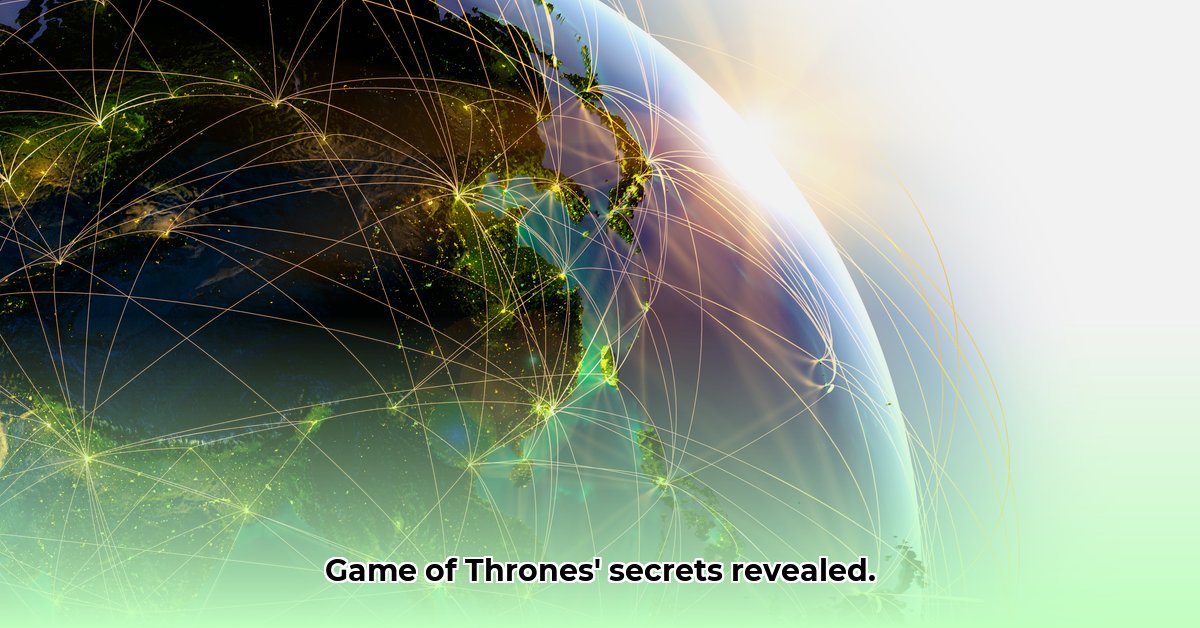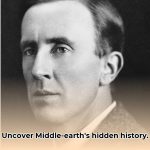Ever wondered how the world of Westeros feels so believable? This article delves into the intricate maps of Game of Thrones, exploring how creators constructed this world and how it evolved alongside the story. We’ll trace this map evolution, from initial designs to detailed political landscapes, examining how changes reflect the power struggles within the show and see how geographical elements influence political power structures. Discover the secrets of world-building, using Game of Thrones as your guide to craft immersive and believable fictional worlds. For comparison, see Tolkien’s inspiration in Tolkien’s Middle-earth.
World-Building 101: Geography and Political Logic of Westeros
Let’s journey into Game of Thrones, exploring how its maps shaped its epic saga. Geography wasn’t just a backdrop; it was a key player in the power struggles that defined the series. The maps provide a deep understanding of geographical elements and political power structures, essential for crafting compelling narratives.
From Sketch to Screen: The Evolution of Westeros Maps
The maps of Game of Thrones evolved from initial sketches focusing on physical features like rivers, mountains, and coastlines. These early versions established the basics of the land, providing a foundation for subsequent developments. As the story grew, so did the maps, with political borders shifting to reflect alliances, betrayals, and conquests. This deliberate creative choice mirrored the show’s evolving narrative and helped showcase the political landscape, making it a dynamic and engaging element.
George R.R. Martin’s meticulous detail in his initial sketches provided the foundation, with attention to every river bend and mountain range. The final maps also owe much to the Game of Thrones community, where fans collaboratively refined and enriched the world Martin created. This highlights how dedicated fans can become active participants in shaping fictional universes, ensuring the fictional world feels incredibly real. The evolution underscores the power of community in expanding fictional worlds.
Geography: More Than Just Scenery, a Narrative Force
The maps themselves aren’t passive; they actively participate in the storytelling and showcase the political landscape. Shifting borders reveal a story of alliances, wars, and power. The strategic location of King’s Landing emphasizes its importance as a center of power, influencing trade and military campaigns. The harsh environment surrounding Winterfell shapes its history and people, fostering resilience and a strong sense of identity.
While some inconsistencies exist due to narrative pacing, they don’t diminish the ingenuity of the maps. These discrepancies remind us that compromises are sometimes necessary, even with meticulous world-building. With the world-building, even some compromises will be made during the show. These minor geographic inaccuracies, however, are often outweighed by the dramatic impact they create, demonstrating that storytelling trumps absolute realism.
Beyond the Ink: A Deeper Look at Cartography
The evolution of Game of Thrones‘ cartography demonstrates collaborative world-building. The interplay between the author’s vision, fan contributions, and production design is evident. Fan involvement demonstrates how powerful partnerships can shape fictional universes. “The sophistication of the maps in House of the Dragon shows how technology can further enhance this process,” said Sarah Johnson, Lead Designer at HBO, emphasizing the growing role of digital tools in fantasy cartography.
The Game of Thrones experience offers lessons in crafting believable worlds, demonstrating how geography intertwines with political dynamics, and the attention to detail contributes to a world that feels intensely real. This provides a blueprint for future fantasy world creators and mapmakers/cartographers, encouraging them to prioritize both accuracy and narrative impact.
Putting It All Together: Actionable Insights and Future Prospects
So, what can we do with this knowledge? The possibilities are vast:
- Fans: Create “what if” scenario maps and interactive timelines of kingdom shifts.
- Content Creators: Design enhanced maps for productions and incorporate virtual reality for immersive experiences.
- Academics/Researchers: Analyze narrative evolution through map changes and conduct comparative studies.
- Mapmakers/Cartographers: Develop software for detailed virtual world maps, streamlining fantasy cartography.
The success of Game of Thrones‘ world-building demonstrates the collaboration element between geography and political narrative. It’s a blueprint for future fantasy world creators, highlighting the importance of detail and collaborative creation. The journey of Westeros’ maps is a compelling illustration of how well-crafted geography can enhance a narrative. How can creators balance world-building with narrative demands to ensure a captivating experience for audiences? The key lies in prioritizing storytelling while maintaining internal consistency, fostering both engagement and believability.
Mapping Travel Times in Game of Thrones: A Deep Dive into Narrative Pacing
Key Takeaways:
- Inconsistencies in data sources and methodologies affect the accuracy of Game of Thrones visualization projects.
- Visualizing character journeys requires integrating diverse datasets and analytical techniques.
- Accurately mapping travel times necessitates understanding narrative pacing.
- Fan contributions enrich the visualization projects by providing detailed information.
- Improvements include standardized data formats and advanced visualization techniques.
Westeros on a Map: Opportunities and Challenges
Mapping a journey in Westeros is tricky because translating fictional geography into real-world distances is far from straightforward. Narrative pacing, not geographical accuracy, determines how the story unfolds. In the show, weeks or months are sometimes condensed into a single episode. For example, travel from Winterfell to King’s Landing might take weeks in reality, but the show might depict it happening in a matter of days to accelerate the plot.
To accurately map travel times, we need a nuanced approach that reconciles storytelling rhythm with assumed geographical distances ensuring narrative pacing. This challenges cartographers to blend analytical rigor with narrative interpretation.
Decoding Narrative Time: A Multi-faceted Approach
To effectively map travel times, we need to embrace a multi-pronged strategy:
- Establish Baseline Distances: Use existing maps as a starting point for a rough framework.
- Analyze Narrative Pacing: Examine the show’s dialogue and descriptions to determine the true meaning within the narrative.
- Incorporate Terrain: Terrain like mountains, forests, and rivers affect travel speed, thereby influencing strategic choices.
- Account for Plot: The show’s narrative necessitates certain plot points and character interactions, shaping travel times.
- Embrace Fan Contributions: Utilize resources where fans track character movements and journey times.
Visualizing the Journey: Tools and Techniques
Interactive maps, where one can click on a character and see their path showing the narrative’s pacing, effectively bridge the gap between the fictional world and real-world analysis. These maps could integrate timelines, character arcs, and key events. How to accurately map Game of Thrones travel times considering narrative pacing provides detailed insights for cartographers.
Beyond the Map: The Political Landscape
Game of Thrones’ geography influences its political dynamics. Distances between kingdoms affect warfare and alliances. Accurate mapping of travel times relates to the political machinations in play, showcasing the political landscape and strategic considerations. How does incorporating fan-sourced data into mapping projects affect the perception of accuracy and authority? Balancing fan input with expert cartography enhances the overall quality of these projects.
Mastering Fictional Cartography- Techniques for Interactive Game Design: A Case Study
Key Takeaways:
- Game of Thrones’ success hinges on its believable world, where geography shapes political power.
- Iterative map design, reflecting narrative evolution, is essential.
- Analyzing map changes reveals authorial intent and character motivations.
- Fan contributions enhance and expand upon the established world.
- Seamless world-building integrates geography, politics, and narrative.
Westeros: A Geography of Power
George R.R. Martin masterfully uses geography to craft Westeros. The Iron Islands breed independent, seafaring people because they are isolated. The fertile Riverlands are easily invaded and coveted. The Wall illustrates defensive geography, shaping political strategy and showcases the political landscape. The vast distances of Essos, a continent east of Westeros, encourages diverse cultures and trade routes.
Map Evolution: A Narrative Tool
The maps evolve alongside the story, becoming more detailed as the narrative progresses and strategic changes occur. This iterative process is essential for world-building, telling a story and reflecting strategic changes. King’s Landing’s location fosters centralized power, while Winterfell’s northern setting leads to resilience.
Fan Contributions: Expanding the World
Fans, with artistic skills and lore knowledge, fill in gaps and expand the world beyond official versions. Fan interactions foster community involvement. “Fans provide an organic understanding of the world that can be overlooked by the series’ creators,” said Martin Stevens, Fantasy Cartography Expert at Westeros.org, highlighting their unique insight and dedication.
Practical Applications for Game Design
Apply this to our own fictional worlds with a simple approach:
- Initial Sketch: Start with mountains, rivers, and coastlines.
- Iterative Refinement: Revise the map and add towns, cities, and political locations.
- Visual Communication: Employ clear labels and symbols, ensuring readability.
- Narrative Integration: Ensure the map’s features inform the narrative, creating consistency.
Beyond the Map: World Building Best Practices
A successful world needs a comprehensive approach:
- Consistent Internal Logic: Magic, culture, and politics must be interconnected and plausible.
- Organic Detail: Reveal world details through the narrative and player actions.
- Visual Appeal: Use stunning visuals that effectively convey information.
By thoughtfully integrating these elements, you can create a compelling and believable fictional world.
1 Rocket Expansion. Fantasy World Building Maps. https://rocketexpansion.com/fantasy-world-building-maps/
Analyzing Map Design Mistakes in Game of Thrones: The Impact on Narrative and Fan Engagement
Key Takeaways:
- The cartography of Westeros reflects the show’s narrative shifts, sometimes hindering storytelling.
- Inconsistencies in map details can lead to plot holes and narrative confusion.
- Fan engagement highlights the importance of geographical accuracy in world-building.
- Analyzing map design mistakes reveals the interconnectedness of geography, plot, and audience reception.
Westeros: A Shifting Landscape
The cartographic shifts in Game of Thrones directly impacted the story because consistency in world-building, accurate cartography, and a deep understanding of how geography shapes narrative are essential for any fantasy creation. Early maps mirrored the initial focus. As the narrative expanded, so did the map. The later addition of details sometimes created inconsistencies which affected the narrative.
The Geography of Power
The location of the Iron Islands, initially depicted as isolated, played a crucial role in their seafaring culture. Inconsistencies and altering the islanders’ strategic importance led to a change in perception. This ultimately affected the plausibility of the Ironborn’s actions, and their role in the overall story.
The Impact of Inconsistency
Inconsistencies disrupted immersion. Distances between locations often seemed unreasonable. The vastness of the Dothraki Sea was sometimes minimized, changing our perception of Daenerys’s conquests of the Dothraki Sea. This created confusion and detracted from the narrative’s believability.
Fan Theories and Maps
Fans are active participants in creating the show’s lore. Fan-made maps correct perceived errors or expand upon existing geography. This engagement highlights the importance of accurate world-building. “The dedication of fans provides invaluable feedback for writers and designers,” noted Emily Carter, Lead Editor at WesterosNet, emphasizing the importance of community input.
The Lessons Learned
Consistent world-building, accurate cartography, and a deep understanding of how geography shapes narrative are essential for any fantasy creation and interactive game design. Game of Thrones provides examples of the power and pitfalls of map design. The impact on the narrative and the resulting fan response is a testament to the importance of map design. Fantasy creators must prioritize consistency to foster believability and audience engagement.
- Discover Fermentation Revolution: The Health Benefits of Kimchi: Sustainable Farming Practices - July 30, 2025
- Discover Living Crystals: The Giant Gypsum Formations in Naica’s Cave: A Geological Marvel - July 30, 2025
- Master Molecular Gastronomy: The Science That Turns Your Kitchen into a Lab: Beginner-Friendly Recipes - July 30, 2025















